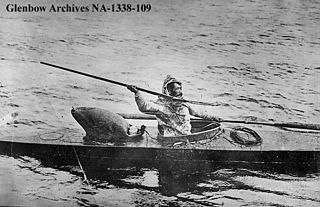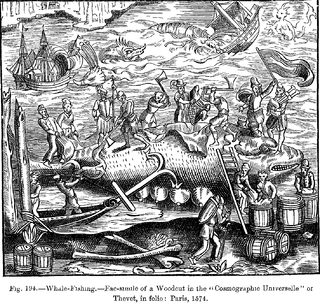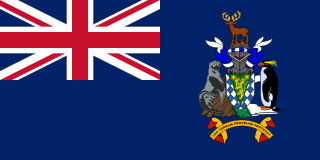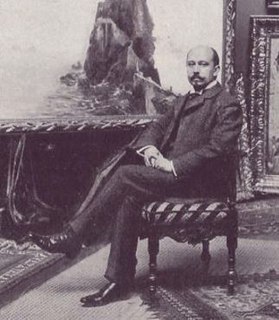



Carl Saltzmann (23 September 1847, Berlin - 14 January 1923, Potsdam) was a German marine and landscape painter.




Carl Saltzmann (23 September 1847, Berlin - 14 January 1923, Potsdam) was a German marine and landscape painter.
He was a pupil of Hermann Eschke, then studied at Düsseldorf, and, after traveling through the Netherlands and Italy, settled in Berlin. In 1878-80 he went with Prince Henry of Prussia on his trip around the world and later accompanied the German Emperor on his visit to St. Petersburg and Norway.
Of his pictures resulting from these journeys may be mentioned "Corvette Prince Adalbert in the Strait of Magellan" (1883, Breslau Museum), "In the Pacific Ocean" (1888, German Emperor), and "Arrival of the Hohenzollern at Kronstadt" (Emperor of Russia). The National Gallery, Berlin, contains two paintings by him. In 1888 Saltzmann was awarded the great gold medal at Berlin and in 1896 he was appointed professor at the Academy.
Saltzmann's painting "Walfang mit der Duncan Grey" (Whaling with the Duncan Grey) depicted the 15 July 1892 "pleasure whaling trip" taken by German Emperor Wilhelm II on the whaling and sealing vessel Duncan Grey, during which a sei whale was harpooned with explosive shells and hauled back to shore. [1] [2]

Carl Menger von Wolfensgrün was an Austrian economist and the founder of the Austrian School of economics. Menger contributed to the development of the theories of marginalism and marginal utility, which rejected cost-of-production theory of value, such as developed by the classical economists such as Adam Smith and David Ricardo. As a departure from such, he would go on to call his resultant perspective, the subjective theory of value.

Whaling is the process of hunting of whales for their usable products such as meat and blubber, which can be turned into a type of oil that became increasingly important in the Industrial Revolution. It was practiced as an organized industry as early as 875 AD. By the 16th century, it had risen to be the principal industry in the Basque coastal regions of Spain and France. The industry spread throughout the world, and became increasingly profitable in terms of trade and resources. Some regions of the world's oceans, along the animals' migration routes, had a particularly dense whale population, and became the targets for large concentrations of whaling ships, and the industry continued to grow well into the 20th century. The depletion of some whale species to near extinction led to the banning of whaling in many countries by 1969, and to a countrywide cessation of whaling as an industry in the late 1980s.

Archduke Rudolf, Crown Prince of Austria was the only son and third child of Emperor Franz Joseph I and Elisabeth in Bavaria. He was heir apparent to the Imperial throne of the Austro-Hungarian Empire from birth. In 1889, he died in a suicide pact with his mistress Mary Vetsera at the Mayerling hunting lodge. The ensuing scandal made international headlines.

Robert Koehler was a German-born painter and art teacher who spent most of his career in the United States.

A harpoon is a long spear-like instrument and tool used in fishing, whaling, sealing, and other marine hunting to catch and injure large fish or marine mammals such as whales. It accomplishes this task by impaling the target animal and securing it with barb or toggling claws, allowing the fishermen to use a rope or chain attached to the projectile to catch the animal. A harpoon can also be used as a weapon. Certain harpoons are made with different builds to perform better with the type of target being aimed at. For example, the Inuit have short, fixed foreshaft harpoons for hunting at breathing holes while loose shafted ones are made for attaching to the game thrown at.

Grytviken is a settlement on South Georgia in the South Atlantic and formerly a whaling station and the largest settlement on the island. It is located at the head of King Edward Cove within the larger Cumberland East Bay, considered the best harbour on the island. The location's name, meaning "pot bay", was coined in 1902 by the Swedish Antarctic Expedition and documented by the surveyor Johan Gunnar Andersson, after the expedition found old English try pots used to render seal oil at the site. Settlement was re-established on 16 November 1904 by Norwegian Antarctic explorer Carl Anton Larsen on the long-used site of former whaling settlements.

Wilhelm, German Crown Prince, Crown Prince of Prussia was the eldest child of the last Kaiser, the German Emperor, Wilhelm II, and his consort Augusta Victoria of Schleswig-Holstein. As Emperor Wilhelm's heir, he was the last Crown Prince of the German Empire and the Kingdom of Prussia.

This article discusses the history of whaling from prehistoric times up to the commencement of the International Whaling Commission (IWC) moratorium on commercial whaling in 1986. Whaling has been an important subsistence and economic activity in multiple regions throughout human history. Commercial whaling dramatically reduced in importance during the 19th century due to the development of alternatives to whale oil for lighting, and the collapse in whale populations. Nevertheless, some nations continue to hunt whales even today.

Prince Albert William Henry of Prussia was a younger brother of German Emperor William II and a Prince of Prussia. He was also a grandson of Queen Victoria. A career naval officer, he held various commands in the Imperial German Navy and eventually rose to the rank of Grand Admiral and Generalinspekteur der Marine.

Carl Anton Larsen was a Norwegian-born whaler and Antarctic explorer who made important contributions to the exploration of Antarctica, the most significant being the first discovery of fossils for which he received the Back Grant from the Royal Geographical Society. In December 1893 he became the first person to ski in Antarctica on the Larsen Ice Shelf which was subsequently named after him. In 1904, Larsen re-founded a whaling settlement at Grytviken on the island of South Georgia. In 1910, after some years' residence on South Georgia, he renounced his Norwegian citizenship and took British citizenship. The Norwegian whale factory ship C.A. Larsen was named after him.

Jason was a Norwegian whaling vessel laid down in 1881 by Rødsverven in Sandefjord, Norway, the same shipyard which later built Ernest Shackleton's ship Endurance. The ship, financed by Christen Christensen, an entrepreneur from Sandefjord, was noted for his participation in an 1892-1893 Antarctic expedition led by Carl Anton Larsen.

Christen Christensen was a Norwegian shipyard and ship-owner. He was the founder and chairman of the world's largest whaling company, A/S Oceana.

The history of South Georgia and the South Sandwich Islands is relatively recent. When European explorers discovered the islands, they were uninhabited, and their hostile climate, mountainous terrain, and remoteness made subsequent settlement difficult. Due to these conditions, human activity in the islands has largely consisted of sealing, whaling, and scientific surveys and research, interrupted by World War II and the Falklands War.
Whaling in Norway involves hunting of minke whales for use as animal and human food in Norway and for export to Japan. Whale hunting has been a part of Norwegian coastal culture for centuries, and commercial operations targeting the minke whale have occurred since the early 20th century. Some still continue the practice in the modern day.

Carl August Heinrich Ferdinand Oesterley was a German landscape painter who eventually specialized in scenes from Norway.

Franz Krüger, known as Pferde-Krüger ("Horse-Krüger"), was a German (Prussian) painter and lithographer. He was best known for his romantic and lively portraits and pictures of horses, which made him the most in demand military and portrait painter in Berlin. His paintings of military parades and hundreds of portraits led to him painting many of the "well to do" of the city.

Prince Friedrich Wilhelm Ludwig Alexander of Prussia was the eldest child of Prince Frederick of Prussia and his wife, Princess Luise of Anhalt-Bernburg.
The Southern Whaling and Sealing Company Ltd (SWSC) were a United Kingdom-based whaling and sealing company, originally formed in 1911 by the partnership of Richard Irvin & Sons of North Shields and the South African-based fishing company Irvin & Johnson. Latterly they were sold to Lever Bros., in 1919 and re-sold to Christian Salvesen Ltd in 1941.

Hermann Wilhelm Benjamin Eschke was a German painter who specialized in marine art.

Max Friedrich Ferdinand Rabes was a German Impressionist painter. Although he is best remembered as an Orientalist painter, he rejected that label during his lifetime and wanted all of his works to be equally recognized.
| Wikimedia Commons has media related to Carl Saltzmann . |
{{cite encyclopedia}}: Missing or empty |title= (help)